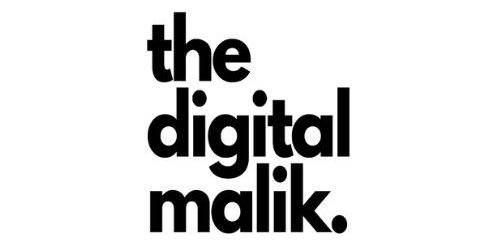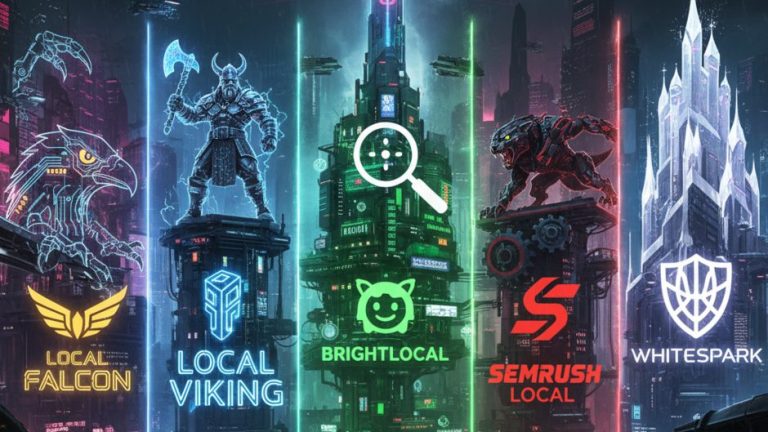What is Programmatic SEO: 2025 A Beginners Guide?

Let’s talk about one of the most powerful strategies that are making digital marketing this year: Programmatic SEO aka pSEO!
It’s a strategic blend of data combining and automation to create search engine highly-ranked content.
If you’ve been working extra hard on your blog or website without getting traffic that you so rightfully deserve then Programmatic SEO might be your key.
Whether you’re writing your heart out on your own blog, running an e-commerce site with tons of product pages, or underpinning content on a SaaS site, having knowledge about Programmatic SEO can be truly revolutionary.
It is all about facilitating it for you to reach more people and watch your audience grow.
Let’s get in there and learn all about programmatic SEO and precisely how we can actually utilize it for you.
Surprise, surprise, it’s not quite as bad as it might seem, and the benefits are huge!
Let’s get in and have a look at what it is and how you can apply it effectively.
Key Takeaways
- Programmatic SEO uses automation and data-focused strategies to develop and enhance content at scale, making it perfect for companies with big inventories or wide content requirements.
- By utilizing flexible templates and organized data, companies can effectively create many web pages aimed at particular keywords, enhancing their opportunities of ranking better in search engine outcomes.
- Important tools for carrying out programmatic SEO consist of SEO automation platforms such as SEMrush for keyword investigation, Ahrefs for link analysis, and content creation tools like Copy.ai for producing optimized content.
- Keeping content quality is important. even with automation, companies must make sure that produced content is useful, interesting, and related to users.
- As AI and machine learning keep changing, staying informed on trends in programmatic SEO will assist businesses in keeping a competitive advantage in the online environment.
Introduction to Programmatic SEO
Definition and Importance in 2025
Programmatic SEO is a clever method to build & improve web pages in bulk with automation and info.
Rather than typing out tons of pages by hand, companies use layouts & organized data to make content that does well on search sites.
This approach is super helpful for sites with lots of material, like blogs, online shops, SaaS tools, and lists.
In 2025, automated SEO matters more than before. Since search engines are getting sharper, companies must work on top-notch, data-based content.
Automation tools such as SEO guides assist marketers in simplifying their SEO work, making it simpler to aim at long-tail keywords and boost rankings.
Other tools like Ranktracker and Screaming Frog help with keyword research & technical SEO checks, making sure programmatic pages are set up well for search engines.
How Programmatic SEO Differs from Traditional SEO
Traditional SEO is about improving single pages by hand, which is great for tiny sites.
But for companies that gotta grow, programmatic SEO is a big deal.
Rather than making every page one by one, marketers rely on flexible templates to create tons of pages using organized data.
For instance, byword.ai gives SEO automation templates that assist companies in making optimized pages fast.
Different platforms such as Supersparks provide CMS tools with built-in programmatic SEO options, making it simpler to handle big content projects.
By using automation, companies are able to cut down on time, boost productivity, & rank for extra keywords—all while keeping top-notch content that follows Google’s newest SEO rules.
How Programmatic SEO Works?

The Role of Automation and Data-Driven Strategies
Programmatic SEO depends on automation & info to build & improve web pages in bulk.
Rather than typing content for each keyword, companies use structured info and templates to make thousands of pages fast.
This method lets websites show up for long-tail search terms that bring in focused visitors.
With DayDream and Whalesynce provides pSEO automation guides that help companies build programmatic SEO plans.
These guides assist marketers in finding popular, low-competition search terms and setting up content automation.
Other platforms like Ahrefs and SEMrush offer keyword research & competitor tracking, making it simpler to spot chances for programmatic SEO.
By using automation, companies can grow their content work without losing quality.
This approach is really helpful for online stores, software services, and list-based sites that must create tons of pages quickly.
Key Components: Templates, Dynamic Pages, and AI Content
Programmatic SEO is built on three main components:
Layouts
Changing Pages
These pages take info from organized sources like tables, APIs, or data storage to make fresh content.
For instance, an online store can build product pages on the fly using a product list.
AI Writing
By mixing these parts, companies could automate making content, boost search results, and bring in extra natural visitors—all while using less time & effort.
Essential Tools for Programmatic SEO

SEO Automation Tools (Rank Tracker, SERP Checker, etc.)
To do well with programmatic SEO, you gotta have the best tools to check rankings, study rivals, and make content better.
The key is to utilize essential tools with SEO automation guides that assist companies in making their SEO work smoother.
These guides show people how to set up automatic keyword tracking, SERP research, and link monitoring to boost search positions.
Essential tools such as:
- Ranktracker
- A strong tool for keeping track of keyword positions & studying search engine results.
- It lets companies keep an eye on their SEO growth and tweak plans as needed.
- SERP Checker
- This tool gives details about search rankings, helping companies see how their websites compare with rivals.
- Screaming Frog
- A site crawler that helps find technical SEO problems, making sure that automated pages are set up well for search engines.
By using these tools, companies can streamline SEO monitoring, spot ranking chances, & improve their content plan for stronger search presence.
Content Generation and Optimization Tools
Creating good content in large amounts is an important part of programmatic SEO.
Rather than making every page by hand, companies use AI-driven tools & content templates to quickly make well-optimized pages.
Focus on using SEO-friendly content layouts that assist companies in making structured, optimized webpages fast.
These layouts make sure the material is well-structured, keyword-packed, and easy to use.
- Jasper
- An AI writing tool that helps make top-notch content for automated SEO. It can write blog articles, product details, and web pages in just a few minutes.
- Surfer SEO
- A tool for content improvement that studies high-ranking pages & gives tips for better on-page SEO.
- Copy.ai
- A tool that creates AI-driven content, helping to grow content production while keeping up quality.
By using these tools, companies are able to automate making content, boost SEO results, and grow their web presence without lowering quality.
Who Should Use Programmatic SEO?
Best Use Cases: SaaS, E-commerce, and Publishers
Programmatic SEO works great for companies that want to grow content production and show up for tons of keywords.
Rather than typing out every page, businesses can use automation & templates to quickly create well-optimized content.
- SaaS Businesses
- E-commerce Shops
- Internet sellers can make product & category pages automatically.
- Platforms like Shopify and BigCommerce let companies build search-friendly product pages in bulk.
- Publishers & Lists
- Sites that depend on lots of content, like job portals, travel pages, and review hubs, can gain from automated SEO.
- Supersparks provides CMS tools with built-in automated SEO options, making it simpler to handle big content.
By using organized data, automation, & AI-driven tools, companies can boost natural traffic, enhance search positions, and expand their web presence without wasting hours on hand-made content creation.
Challenges and Considerations for Beginners
While programmatic SEO is powerful, it comes with challenges—especially for beginners.
- Content Value
- Computer-generated writing still needs to be helpful, interesting, & properly organized.
- Technical Setup
- Setting up programmatic SEO needs organized data, flexible templates, and automated tools.
- Newbies might have to use sites like Google Search Console to track progress & solve indexing problems.
- Avoiding Repeated Content
- Search engines punish copied content, so companies should make sure every page stays original & useful.
- Tools such as Surfer SEO assist in improving content for higher rankings.
By knowing these problems & using the correct methods, companies could effectively apply automated SEO and push lasting success.
Step-by-Step Guide to Implementing Programmatic SEO

Identifying High-Volume, Low-Competition Keywords
The first move in automated SEO is picking the best keywords.
You require high-search, low-competition keywords that bring visitors without being too hard to rank for.
- Use tools like Ahrefs and SEMrush to analyze keyword difficulty and search volume.
- Watch for trends in search terms—for instance, if you manage a travel website, you could notice that folks look up “top hotels in [city name].”
By looking at growing keyword chances, you can make content that does well and pulls in the right crowd.
Creating Scalable Content Templates
Once you have your keywords, the next step is to build content templates that can be used across multiple pages.
- Use Webflow or WordPress to create dynamic templates that pull in structured data.
- Make sure every template has better headings, meta summaries, and inside links to boost SEO results.
Templates let you grow content making without losing quality, making it simpler to create tons of pages fast.
Automating Content Publishing and Optimization
The final step is to automate content publishing and ensure that each page is optimized for search engines.
- Use Zapier to connect your CMS with automation tools, allowing you to publish content without manual effort.
- Optimize each page with Surfer SEO to ensure that it meets Google’s ranking criteria.
By making the process automatic, companies can free up time, boost productivity, & grow their SEO work without always handling content by hand.
Future Trends in Programmatic SEO for 2025
AI and Machine Learning in SEO Automation
AI & machine learning are changing programmatic SEO, making it sharper & more effective.
Rather than depending on manual keyword study and content writing, companies can now rely on AI-driven tools to streamline and improve their SEO plans.
- Programs like Jasper and Copy.ai use AI to create top-notch content in large amounts, cutting down the time required for hand-written work.
- Surfer SEO & Frase study high-ranking sites and give AI-driven tips to enhance article layout and word choice.
By using AI, companies are able to grow their SEO work, boost content value, & keep up with search engine changes.
The Role of Semantic SEO and NLP
Search engines keep getting smarter, focusing on semantic SEO & natural language processing (NLP) to grasp what users really mean.
Instead of only matching words, Google now values context and purpose in searches.
- The Online Malik provides meaningful SEO methods that assist companies in improving material for user intent and subject importance.
- Google’s Natural Language API helps businesses analyze text and improve content relevance based on NLP insights.
- SEMrush & Ahrefs offer tools to find similar keywords & subject groups, making sure content matches what users want.
By paying attention to semantic SEO & natural language processing, companies can make content that shows up higher, keeps readers interested, and adjusts to upcoming search engine changes.
Final Thoughts
The way businesses approach search engine optimization is really shifting thanks to Programmatic SEO.
Think about it – using automation, smart data analysis, and being able to create tons of relevant content means companies can now build search-friendly pages way faster than before.
It doesn’t matter if you’re running a SaaS thing, an online store, or a content-heavy site, programmatic SEO gives you some pretty slick ways to boost your visibility and pull in the right people organically.
The Real Engine: Automation in SEO
What makes Programmatic SEO so powerful and efficient?
It’s all about automation. By using reusable bits and templates to whip up content, you free yourself up to really focus on finding those sweet spot keywords.
The ones with lots of traffic but not a ton of competition – that actually bring in results.
You’ve got to be smart about it, you can’t just churn out duplicate stuff that feels weird to people or gets you in trouble with search engines.
At the end of the day, no matter how much content you create, it’s got to be a good experience for the user.
What’s Next?
As we move further into 2025, it’s clear that AI and machine learning are going to keep shaping what smart SEO looks like.
Keeping an eye on these tech changes and figuring out how to effectively use programmatic SEO could be a real game-changer for your business in crowded online spaces.
Honestly, now’s a great time to check out automation tools, play around with ways to scale your content, and tweak your SEO strategy to get the most out of your online efforts.
Frequently Asked Questions (FAQs)
What is programmatic SEO?
Programmatic SEO is a method that employs automation and data-focused techniques to produce and enhance content at scale. It enables companies to create many web pages aimed at particular keywords, boosting their odds of ranking better in search engine outcomes.
How does programmatic SEO differ from traditional SEO?
While traditional SEO concentrates on improving current content and creating backlinks, programmatic SEO automates the content generation process. It uses templates and information to generate large amounts of content fast, making it simpler to aim for a broader variety of keywords.
Who can benefit from programmatic SEO?
Programmatic SEO is especially helpful for companies with big inventories, like e-commerce sites, SaaS firms, and publishers. It lets them effectively produce content that aims at certain niches and boosts their presence in search engines.
What tools are essential for implementing programmatic SEO?
Key instruments for programmatic SEO consist of SEO automation instruments like SEMrush for keyword investigation, Ahrefs for backlink examination, and content creation tools like Copy.ai for making optimized content layouts.
What are the challenges of using programmatic SEO?
Some difficulties include guaranteeing content quality, handling large amounts of data, and staying updated with search engine algorithm shifts. It’s important to keep a balance between automation and human supervision to make sure that the content stays useful and important to users.






